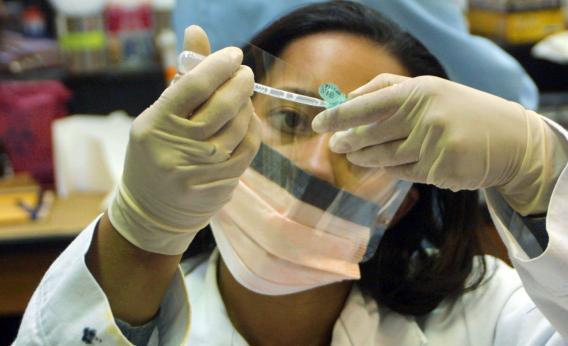On Friday, the New York Times reported that the NYC medical examiner’s office is reviewing more than 800 rape cases in which DNA evidence may have been mishandled by an incompetent technician. Joseph Goldstein writes:
Supervisors have so far found 26 cases in which the technician failed to detect biological evidence when some actually existed, according to the medical examiner’s office. In seven of those cases, full DNA profiles were developed—in some instances, evidence that sex-crime investigators did not see for years, hampering their ability to develop cases against rape suspects.
The piece goes on to note that, in the course of her job handling the DNA evidence collected in “rape kits,” the technician—identified by the Times as Serrita Mitchell—also occasionally ignored or improperly analyzed potentially significant stains left on the victims’ clothing.
There are two worries here. First, while the medical examiner’s office is downplaying the risk of cross-contamination—that is, the possibility that DNA evidence left by one person could be mistakenly matched to another, innocent person—there’s no real reason to trust them. Just as troubling is the prospect of wrongful exonerations, leaving sexual offenders free to strike. Rape often isn’t a one-off crime; a 1997 Bureau of Justice Statistics study found that rapists who had been released from prison were more likely than other ex-cons to be re-arrested for rape.
This is the second big tainted-evidence case I’ve read about in the last several months. Last year, a Boston chemist named Annie Dookhan was accused of mishandling thousands of samples during the nine years she worked in a state lab analyzing evidence in narcotics cases. Dookhan was known for her preternatural speed, often analyzing more than 500 samples per month. (The average chemist analyzes between 50 to 150 samples per month.) As it turns out, she was fast because she was sloppy. Under questioning, she admitted that she rarely followed proper procedures; the Boston Globe recounts one supervisor’s astonishment that “Dookhan did not seem to use a microscope, which is necessary to confirm that a substance is cocaine.” Now, approximately 34,000 cases are being reviewed by the state, and some of the 1,141 convictions in cases where Dookhan handled the evidence have already been overturned.
It’s tempting to wave these incidents off as the work of rogue technicians. But they also indicate a systemic problem with the way forensic labs are managed and administered, and raise important questions about the prevalence of human error in evidence work.
Though television programs might give the impression that all forensic technicians are quirky, infallible geniuses, that’s far from the truth. A recently posted entry-level Criminalist position in New York City starts at $23.93 per hour—hardly the sort of salary that would attract a superstar. And though Dookhan claimed to have a master’s in chemistry from the University of Massachusetts, she appears to have made that fact up.
It turns out there are no national standards for the management and administration of crime labs. According to a 2009 report from the National Research Council:
There is no uniformity in the certification of forensic practitioners, or in the accreditation of crime laboratories. Indeed, most jurisdictions do not require forensic practitioners to be certified, and most forensic science disciplines have no mandatory certification programs. Moreover, accreditation of crime laboratories is not required in most jurisdictions. Often there are no standard protocols governing forensic practice in a given discipline. And, even when protocols are in place … they often are vague and not enforced in any meaningful way.
That same report noted that many forensic laboratories are being forced to do more with less, which impacts quality control and can lead supervisors to prize speedy employees like Annie Dookhan. A Globe story noted that employees at Dookhan’s lab were consistently overworked, inundated with “pleas from district attorneys to lab workers to expedite cases, amid a growing backlog estimated in a March 5, 2012 e-mail as being at least nine months long.”
The scariest thing? Outlandish ineptitude will draw press attention, but there’s no way of knowing how many technicians are cutting corners in a less ostentatious way. There’s a frightening lack of transparency at America’s evidence labs. If ineptitude happens on a large scale, it’s likely also happening on a smaller scale.
